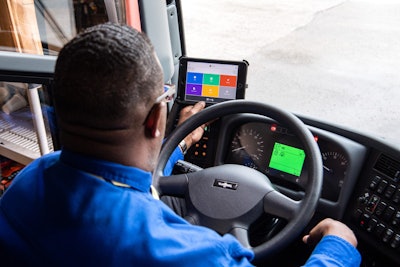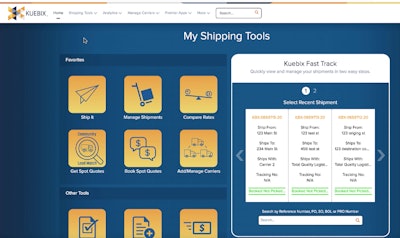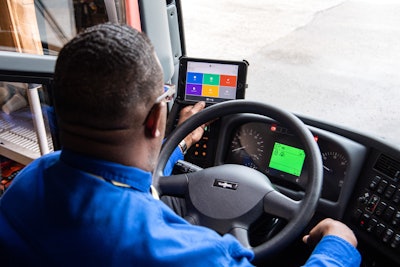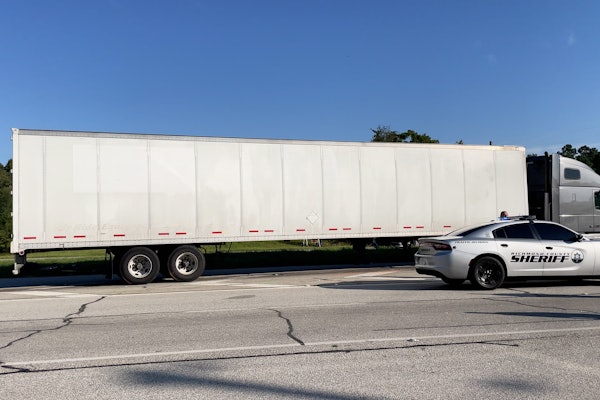
 The Community Load Match platform from Trimble gives carriers access to loads from 20,000 shippers.
The Community Load Match platform from Trimble gives carriers access to loads from 20,000 shippers.When the freight economy was red-hot in 2018, motor carriers and logistics service providers (LSPs) saw a flurry of technology startups launch digital freight marketplaces to make spot-market transactions more efficient for all parties.
Now that motor carriers and LSPs are adjusting their operations to meet the current economic climate with rapidly shifting levels of demand, technology providers are going all-in on digital freight matching.
On Thursday, Trimble released a new version of its Community Load Match platform for shippers and carriers using its transportation management software (TMS) systems. In January, Trimble acquired Kuebix and integrated its Community Load Match platform with Trimble’s existing carrier TMS systems (Innovative, TMW.Suite and TruckMate).
“Trimble’s acquisition of Kuebix is part of our strategy to enable a collaborative, fully-connected supply chain,” said James Langley, senior vice president for Trimble Transportation.
The updated platform is designed to optimize freight moves by having shipment data flow between parties to match truckload shipments with capacity, now with improved map visualization through Trimble MAPS.
Trimble said carriers in the community have direct access to more than 20,000 shippers using the Kuebix TMS. Shippers can request and receive spot and contract rates from the carrier community, and carriers are able to designate preferred lanes.
Another new development in freight matching comes from TMS provider Transport Pro, which offers a cloud-based platform for logistics companies. Its new Book Now feature allows customers to offer their carriers immediate booking of available loads.
Book Now allows brokers to share available freight via their company websites for carriers to search for and book loads, and automatically plan the loads in the TMS when notifications are sent to the freight management team.
Transport Pro also is working with DAT and Truckstop to integrate with their electronic booking solutions by the end of July.
On the logistics front, another company that has been making big investments in digitization is Schneider. The company’s logistics services division has a new carrier marketplace that uses dynamic capacity pricing for shippers.
The new pricing capability uses technology from Blue Yonder, a transportation management system for shippers. Schneider now is able to give carriers and shippers near-real-time matching of price and capacity along with tracking that is connected to – and made available on – Blue Yonder’s Luminate Platform.
The digital experience speeds management of booking and tracking loads, the company says, adding to its previous investments in Overhaul’s real-time supply chain visibility and TriumphPay’s third-party carrier payment capabilities that use Transflo’s image capture and other data.
Raising driver performance
Amid economic uncertainty, fleets have been looking to downshift the cost side of their ledgers to extend the longevity of assets and to reduce fuel, maintenance and operating expenses.
 Samsara’s Driver Efficiency Report shows drivers fuel behaviors in seven categories.
Samsara’s Driver Efficiency Report shows drivers fuel behaviors in seven categories.Two announcements this week show opportunities for fleets to get more value out of existing investments.
Samsara added a new Driver Efficiency Report to its mobile fleet management and electronic logging device (ELD) platform to help fleets identify and coach driving habits toward improvement. The report has an efficiency score that aggregates time-based measurements in seven areas.
The measurements show: the time drivers spent above thresholds in idling (more than two minutes), fuel-efficient speed zones, cruise control, coasting, a green band for RPM, high torque (greater than 90%) and anticipation events (the number of braking events where the time from accelerator to brake is less than one second).
Samsara said the Driver Efficiency Report helps fleets coach drivers on efficient driving behavior by helping them understand how to improve their scores. A trends graph plots how each driving behavior changes over time so that fleet managers can visualize how coaching efforts change impact efficiency.
“Coaching drivers on their driving drove the change for us,” said Alan Hewell, a fleet manager for Mar-Jac Transportation, a Samsara customer and poultry processor. “We’re well above a mile a gallon since we started, and we’ve been able to set parameters for incentive and fuel bonus programs.”
 Vnomics’ True Fuel has a mobile driver app that shows drivers their status toward attaining the fleet’s monthly objective.
Vnomics’ True Fuel has a mobile driver app that shows drivers their status toward attaining the fleet’s monthly objective.Vnomics Corp., a provider of onboard fuel optimization that combines real-time driver coaching and fuel efficiency insights, now is making its True Fuel platform available to fleets as an application that works with their existing telematics systems, including ELDs.
“Expanding our product offering to run True Fuel on existing telematics platforms will mean more fleets can realize its benefits, including saving between 3% and 10% on their annual fuel purchase,” said Bob Magnant, vice president of product management for Vnomics.
True Fuel uses real-time in-cab coaching to correct inefficient driving behaviors. The software accurately quantifies fuel loss due to driver behavior (engine speed control, speeding, idling, etc.) to give fleets an accurate and fair fuel performance-based metric.











